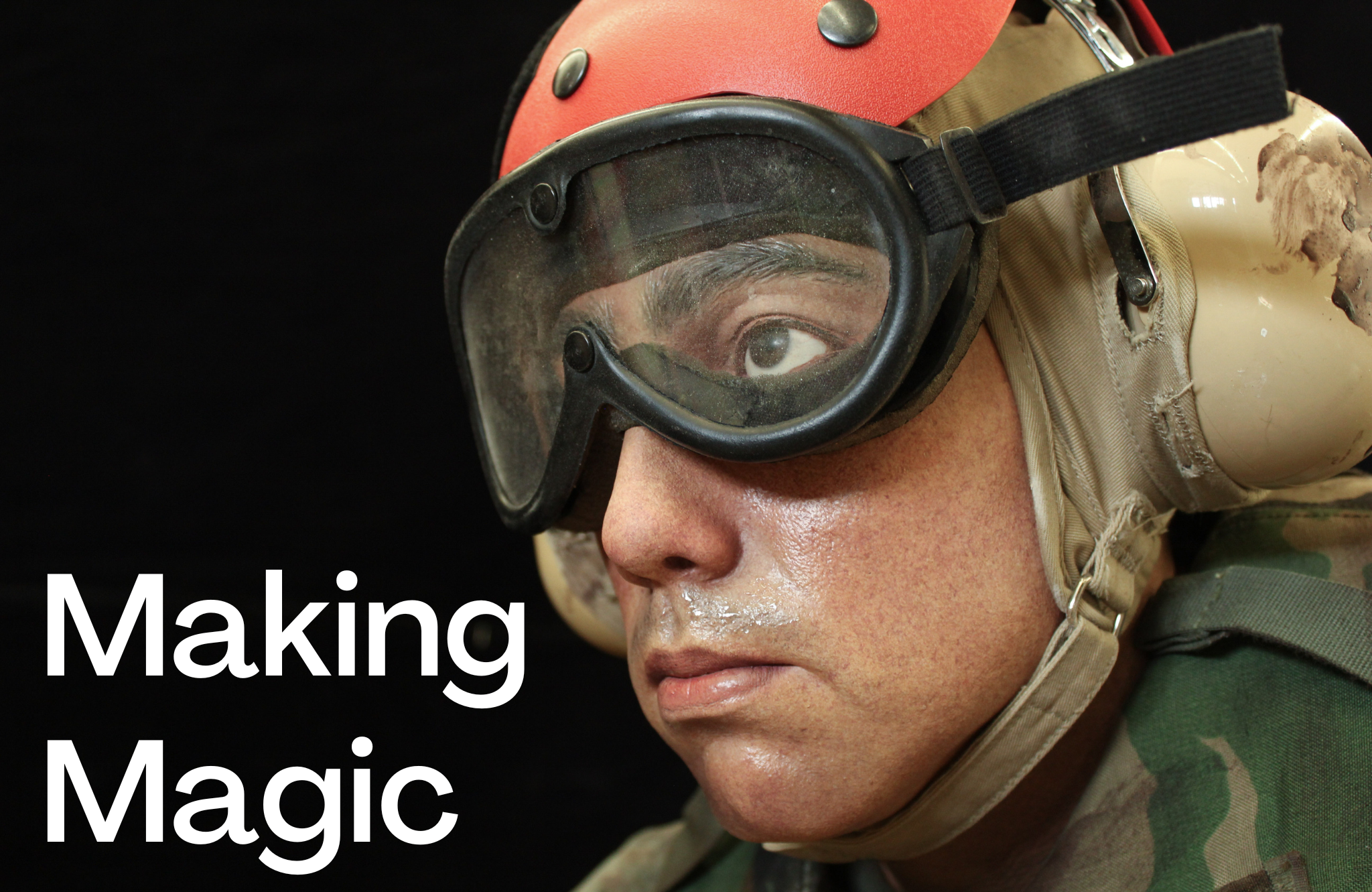Making Magic

Making Magic
April 4, 2024 by Taylor Studios
Bringing Animal Models to Life
When I was nine years old, I acquired a freshly updated copy of “A Field Guide to Reptiles and Amphibians of Eastern and Central North America,” by Roger Conant. I was an avid reader of both fiction and non-fiction, but few books made my young imagination soar like this simple illustrated field guide.
Pouring over written descriptions and measurements, shaded geographic maps and colorful illustrations, I was introduced to strange creatures beyond my wildest dreams—many of which I was shocked to learn could be found within a day’s drive from home.
Those pages were where I first met the eastern hog-nosed snake, who spreads a cobralike hood and hisses loudly before writhing and collapsing with a lolling tongue. They introduced me to the hellbender: a bizarre yet secretive salamander who can grow over two feet in length and hides beneath large rocks in swift-moving streams.
My new field guide answered many questions, but it left me with even more. How well do these animals blend into their environment? What does a two-foot-long salamander look like in person? Just how smooth are the scales of a five-lined skink?
It wasn’t until a few months later that I got to see some of these species in person. They were displayed in a glass cabinet at a local museum, meticulously labeled and organized.
My reactions were mixed.
On one hand, I lit up with excitement to recognize the names on the labels. I was intrigued to see the sizes, shapes, and textures of the actual snakes, turtles, lizards, salamanders, and frogs described in my field guide.
On the other hand, it was clear that these specimens had seen better days. Many were quite old, and they were beginning to deteriorate after decades in storage. Their vibrant colors had faded, and their sunken eyes were unmistakably lifeless. Some had clearly been salvaged from busy roads after being run over—a fate that was difficult for even a skilled taxidermist to cover up.
I found myself returning to that glass cabinet over the next few years. I was still intrigued, and still felt grateful to have access to real examples of these rare and elusive species. But I also found myself asking that ever-important question: “Could this be better?”
Here at TSI, we sometimes work with clients who have inherited taxidermy and aren’t sure if it should be incorporated into a new exhibit. These clientele express concerns about durability, aesthetics, and even relevance, depending on the exhibit’s central theme.
One great benefit of working with TSI is our ability to fabricate lifelike models of many plant and animal species. Our skilled sculptors and painters work alongside our interpretive planners to accurately capture the anatomy, habitats, and behaviors of fish, amphibians, birds and beyond.
We communicate with the client to make sure that every model plays a role in telling a story. From crafting detailed scales and feathers to selecting the perfect pose, we strive to bring out the true character of some of nature’s most intriguing creatures. A perfect coat of gloss leaves a frog’s skin glistening indefinitely. The expertly selected eyeballs of a heron portray the sharp vision and focus of this stealthy winged hunter. Many of our models can be made touchable, allowing visitors to experience the tactile features of a turtle’s shell or a hawk’s talon.
Seeing the attention to detail and commitment to accuracy that characterizes a TSI exhibit, I feel inspired to continue exploring and sharing nature’s delightfully strange creatures and wild places.